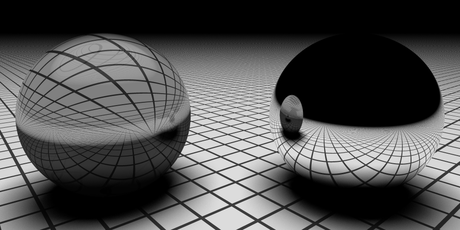
well, are we talking about an earth-resident photon or a deep-space photon?
1) an earth-resident photon:
that's a strange way to put it, "Earth-resident photon," but it simply means a photon that's generated HERE on this planet and might very well be reflected around by bouncing off (or being refracted by) neighbouring objects.
This sort of photon is exactly as old as the last reflection/refraction event. This sort of earth-resident photon is known as a TIME COLLAPSED, TRAPPED or RESET photon because it hasn't existed for long enough for its ABILITY TO DEGRADE into a more red-shifted photon to become evident. Its 'tiredness' is an UNMEASURABLE VALUE because of its regularly-reset age. We need to look at deep-space photons to see what a really old photon might look like...
2) a deep-space photon:
to understand why deep-space photons are SIGNIFICANTLY DIFFERENT from earth-resident photons, we have to look at how these 'photons' as they're known are created.
a GAME OF TETRIS at 670,616,629 miles per hour
There, now that you've read (and absorbed) that, you'll know why older light is degraded. The very fabric of spacetime is UNSTABLE ACROSS THE AEONS... that's why our distant view of our universe offers us such an exotic view of the stellar objects that Big Bang Theory says existed back then. Which is total bunkum. A singularly-insane spacetime-generating event has nothing to do spacetime's instability over time, which is what we're really seeing with red-shifted light from really old stars.
conclusion:
Sure, this still means these really old light comes ONLY from stars that are really distant with no spacedust or planets in the way. The real difference is, THAT STAR IS GOING NOWHERE i.e. it's not racing away at anything approaching the speed of light the insane Big Bang Theory might suggest. In fact, it's doing just what it normally does, sits in a galactic cluster adherent to the laws of physics, has planets and dusty-icy remnants of its stellar creation disc.
THE FABRIC OF SPACETIME RELAXES OVER TIME.
And, obviously, this will be easier to spot in the less knotted 'photons' than in tightly-knit 'matter'. But even matter decays over time. Protons are said to have a 1036 years half-life, but so what? Red-shifted light is a vivid illustration of this same old relaxation effect. Really old photons (i.e. the structure of spacetime that allows the super-fast game of SPACE TETRIS to take place) effectively degrade, or unravel, over time -- get old and tired; just like you and me.
We're all decaying, nothing is forever.
Sorry.

